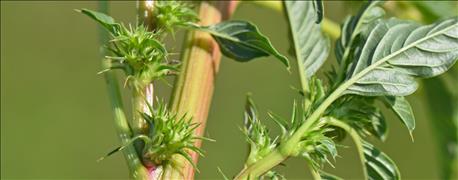October 18, 2016

With the recent confirmation of Palmer amaranth in Minnesota, state weed specialists say it is critical to identify this noxious weed and eradicate it before it becomes widespread.
Jeff Gunsolus, University of Minnesota Extension weed specialist, prepared the pictorial guide “Comparing Palmer Amaranth and Tall Waterhemp — Growth and Development,” which identifies key characteristics of Palmer amaranth and compares them to tall waterhemp at several growth stages throughout the growing season.

NEW WEED IN MINNESOTA: A Palmer amaranth plant was found and confirmed in the eastern part of Yellow Medicine County in September. (Photo: Bruce Potter)
Check out the pictorial guide at extension.umn.edu/agriculture/weeds/weed-id/docs/palmer-amaranth-and-waterhemp-comparisons-annotated.pdf. Detailed descriptions also accompany the photos. To access the notes, open the file in Adobe, click on “View,” scroll to “Comment” and then select “Annotations.”
Waterhemp has been a big enough challenge for many to control, says Liz Stahl, U-M Extension crops educator based in Worthington. Now farmers need to be on the lookout for Palmer amaranth.
“If you seeded any conservation plantings recently, it is in your best interest to be scouting,” Stahl says. “Scouting and eradication can help keep this weed from establishing and moving into our crop fields.”
She notes that it would be challenging for Minnesota farmers to properly time a postemergence herbicide application before Palmer amaranth exceeds 4 inches. This fast-growing weed is likely resistant to glyphosate and Group 2 herbicides (ALS inhibitors like FirstRate), and potentially to Group 14 herbicides (PPO inhibitors like Flexstar), she adds.
Source: University of Minnesota Extension
You May Also Like




